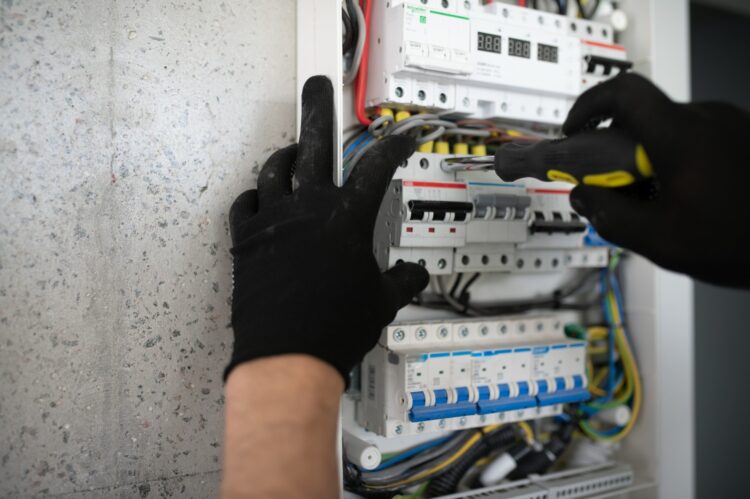With the modern issues of connectedness in the world, power surges on electrical systems should be a major issue, both to the homeowner and to the industrial plant managers. Installation of a type 1 surge protector is one of the best options to protect the whole electrical system against exterior transient voltages, e.g. lightning or utility switching.
Whether in furnishing a new house or renovating an industrial building, you need the necessary knowledge about the process of installing type 1 surge protection device (SPD). We are going to go through all the steps and provide an understanding about how to get components with suppliers of industrial electrical equipment.
Understanding Type 1 Surge Protectors and Required Materials
The main service entrance, the point between the grid of utility and the main breaker panel has Type 1 surge protector installed. It is built to prevent lightning or utility switching voltages, usually at high voltages, before they get to sensitive circuits. Type-1 devices, in contrast to Type 2 or 3 protectors, installed closer to particular equipment, provide whole-system protection. They are particularly important in locations or premises where the reliability of power is essential like production factories, server rooms and residential intelligent homes.
Basic tools used to install Type 1 SPD will include screwdrivers, wire strippers, cutters, multimeter, drill and safety equipment. Some materials needed are a UL 1449 4th edition surge protector, correctly rated breakers, correct wire gauges, and a lockout/tagout kit on an industrial installation. Under industrial settings, parts should always be obtained by dealing with industrial electrical equipment dealers. These vendors offer high performance equipment that is rated to carry high loads and may even be able to offer technical advice in complicated systems.
Installation Steps for Residential and Industrial Settings
Begin by opening the main breaker and test that the panel is de-energized with a voltage tester. Use complete lock out /tag out practices in industries. Keep the mounting place near the breaker panel because shorter wires decrease impedance and perform better.
Install the SPD, and lead the wires to the appropriate terminals: black to the breaker with two poles (L1, L2) and white to neutral and green to the ground. Ensure all fasteners are tight, locked in place appropriately as per the manufacturers specifications. In certain installations, a breaker can be replaced by lugs where code permits.
Reapply power; indicating lights. The condition of the green LED normally indicates that the SPD is on. In case lights are not responsive or a red light is portrayed, recheck wiring. To be provided with a full protection in the industrial facilities, it is recommended to conduct run diagnostics, in the case of simultaneously applying several SPDs in substations. Complex equipment in such environments would be safeguarded by proper planning and layout.
What Not to Do in the Process of Installation
Though it may seem to be an easy process, a type 1 surge protector installation could go wrong when the simplest of instructions are disregarded. The gravest mistake which is repeated time after time is the use of too long wires. High impedance due to the length of wire and the effectiveness of SPD are reduced. Always strive towards short and predictive relationships. The other typical mistake is called miswiring; reversing a polarity or a ground connection can make the unit of no value or even hazardous.
Especially dangerous is improper grounding. Unless the green wire is properly fastened to a solid ground, there will not be a safe transfer of the surge power. Moreover, incorrect selection of the devices as far as their wrong voltage rating or capacity is concerned is leading to numerous installations. To prevent such, it is recommended that only those suppliers who are experienced majors in the industrial electrical equipment should be consulted, they will provide compatibility and be sure of the local code. Finally, failure to test after installation, or obtain permits would result in violation of codes, or even failure of the system in future.
Advantages and Applications in Commercial and Industrial Setting
At home, Type 1 SPD safeguards all the systems and connected appliances, such as refrigerators, smart TVs, routers, HVAC, etc., against the power surge caused outside a home. It does not protect against surges over phone or cable but does reduce the chances of large scale electrical damage greatly. This means there will not be expensive repairs and more peace of mind.
The values are even greater in industrial settings. Other devices such as CNC machines, PLCs and servers require clean power with no interruptions. Any surge may cost thousands in repair and make production come to a halt. Such disturbances are avoided by type 1 SPDs. They also contribute to the compliance with safety requirements and may even lessen the insurance rates. Such protection is ideal in facilities located in regions where power is not dependable or storms tend to prevail. Industrial electrical equipment suppliers are particularly advisable because their non-proprietary (industry standardized) component parts are more reliable, have greater surge current ratings, and are more reliable.
Choosing the appropriate Surge Protector and the Final Considerations
You should plan to invest in a surge protector and that should be UL 1449 4th Edition rated and make sure that the voltage rating of the protector is correct; 120/240V in residential and 277/480v and above in industrial. Most buildings require units rated at 20kA and 50kA with an industrial system requiring as much as 100kA. The functions that are useful are thermal fusing, replaceable modules, and LED indicators.
Adhere to all the local codes and manufacturer instructions. A licensed electrician is recommended in residential setups. With industrial systems, liaise with an electrical engineer or facility manager keenly regarding protection of a myriad of panels or substations. This is despite the upfront cost which is significantly offset by the down time and damage saving.
Use only the reliable suppliers of your industrial electrical equipment ensuring that your equipment is certified, compatible, and durable. Most suppliers also provides engineering services as part of ensuring code compliance and best performance of the whole system. Protection against surge is not an option in a high-risk electrical environment: It is a choice to make a system reliable and safe.










